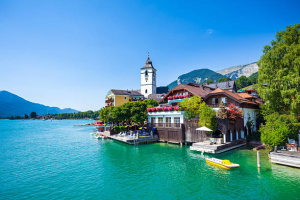Top 5 Most Beautiful Lakes in Bulgaria
Nothing compares to a peaceful view of a lake at dusk. If you are in Bulgaria, you can enhance this picture-perfect scene with thrilling birdwatching ... read more...opportunities, cycling routes, or a complimentary open-air spa treatment. Discover the most beautiful lakes in Bulgaria by reading on.
-
Rila is one of our country's most beautiful mountains, and the Seven Rila Lakes are the jewels in its crown. An undeniable fact. However, the mountain hides nearly 200 lakes, each of which is worth a visit. In this vein, if you want to enjoy one of the most beautiful, but still relatively unknown, lakes in Rila, we recommend visiting the Urdini lakes.
The Urdini Lakes are situated in Northwestern Rila's most inaccessible region, more specifically in the Urdin Circus, which is situated between Damga Peak (2670 m) and Dodov Peak (2661 m). They are named Triagalnika ("Triangle"), Suhoto ("The Dry"), Udavnika ("Drowning"), Ribnoto ("The Fish"), Golyama ("Big Panitsa"), and Malka ("Small Panitsa"), and they represent a group of six lakes. The lakes don't cover a lot of ground. Ribnoto (0.8 hectares) is the smallest, and Lake Golyamata Panitsa is the largest (about 2.5 hectares).
They are at different heights and distances from each other, but despite their separation, they are connected in an unusual way. There are streams flowing from each of the lakes. They form small waterfalls, which combine to form the Urdina River, a right tributary of the Cherni Iskar.
Location: northwestern Rila Mountains, Bulgaria

Wikipedia 
Hotel Map -
Tevno Lake, which is situated about 2515 meters above sea level, is one of the emblems of the majestic Pirin Mountain and a popular tourist destination. Tevno Lake and the surrounding area are breathtakingly beautiful, whether you visit the Pirin Mountain in the winter or the summer.
Tevno Lake is located on a terraced plateau near the Momin Dvor and Valyavishki chukar peaks. It is the highest and largest lake in the Belemeto Circus, which has over 30 small lakes and is located on the southeast. The name "Tevno" is derived from the word "dark" in the local dialect. It has a surface area of 65 acres and a depth of 4 meters. The Lake is the headwaters of the Mozgovitsa River, where you can find the lake-named small shelter.
The region is a great starting point for the stunning Momin Dvor, Kralev Dvor, Zhangala, and Kamenitsa peaks, which can all be reached in 30 minutes, 45 minutes, 1 hour, and 30 minutes, respectively. One of Pirin's most stunning views can be found on the northwest shore of the lake, on the slopes of Valyavishki Chukar, where Momin Dvor, Kralev Dvor, Little Kamenitsa, Kamenitsa, and Kamenishka Kukla are all reflected in the lake's deep blue waters.
Begovitsa (Kamenitsa) and Demyanitsa huts serve as starting points for Tevno Lake during the winter and entering the Mozgovishka Porta area during the winter necessitates the use of special winter gear.
You can get hot food and a warm bed at Tevno Lake Shelter, which is right by the lake. From there, you can spend an unforgettable night in the mountains, close to the stars, and surrounded by towering peaks. The shelter is a sizable 30-bed, 2-story structure. There is a dining area and kitchen for tourists. The toilets are outside, the water comes from a spring, and it is electrified with aggregate. It is accessible all year long. The shelter is located along the E-4 route in Europe.
Once you visit here, you'll never leave without returning.Location: Tevno Lake, Pirin National Park, Bulgaria
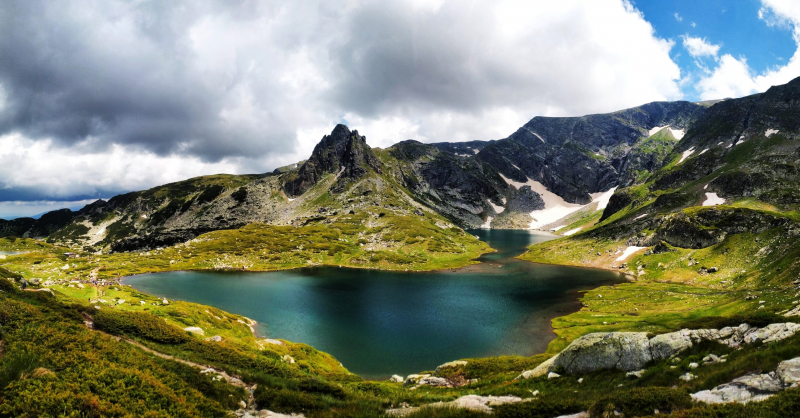
Pickyourtrail.com 
Wikipedia -
The largest of the eleven Popovi Lakes is Popovo Lake. The lake and its surroundings are among the most popular hiking destinations in the Pirin.
Popovo Lake (2234 m above sea level) is the absolute leader among Pirin Mountain's lakes, being the largest (with an area of 12.4 ha), deepest (29.5 m in its southwestern part), and widest (336 m). It gets its water from heavy rains, melting snow that stays in the foothills of the surrounding peaks until late summer, and two flowing brooks with well-shaped deltas that flow into its southern part. The volume of water is estimated to be 1.27 million m3. Around the lake, the steep slopes of five peaks rise - Sivria, Djano, Kralev dvor, Momin dvor and Djengal (the Fairy peak).Among the impressive peaks, the vast Popovo Lake resembles a small sea. It attracts hundreds of nature lovers from all over the world with its clear waters and colorful coast - at times low, at times steep, covered in fragrant meadows, dwarf pines, and amazing rock figures.
Popovo Lake is about an hour and a half hike from Bezbog hut. Its waters flow to the six Ribni Popovi lakes (Fish lakes) from the northeastern end of Popovo Lake. The lakes form the source of the Retizhe River, which flows into the Mesta River near Momina Klisura.
Popovo Lake is shaped like an irregular pentagon. The small round island (35-30 m) covered with dwarf pines called 'Kalimyavkta' is located in the middle of the lake.Samodivski Lakes are a picturesque group of three small lakes located between Djengal and Momin dvor. There is a legend that once lived nearby the most beautiful daughter of god Perun, and her brother Djengal's palace was on a nearby peak, now known as Samodivski peak (The Fairy peak). Bes, the evil god, fell in love with Dzhengal's sister and considered kidnapping her. Djengal became enraged and gathered his god-brothers, who covered Bes with stones on the top, which is now named after him (Bezbog - Bes-bog; 'bog' means 'God'). Bezbog is northeast of the Popovski Circus.
Location: Popovo Lake, Pirin National Park, Bulgaria
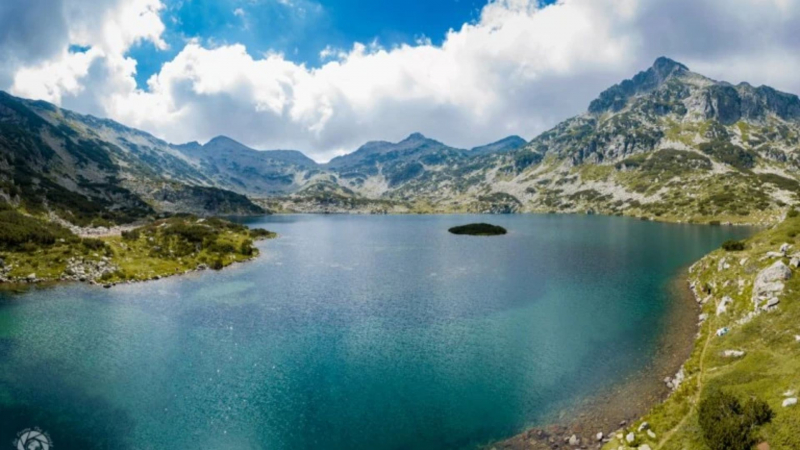
Popovo lake - goframetheworld.com 
The island in the middle of Popovo lake - goframetheworld.com -
If you've spent any time on Instagram, you've probably seen pictures of stunning pink lakes in Western Australia or the Yucatán peninsula of Mexico. However, very few people are aware that Bulgaria has its own pink lake. The fact that you can swim in Bulgaria's pink lake, which even has therapeutic qualities, makes it even better.
The pink hue is entirely natural; tiny brine shrimp that live in the extremely salty water give it that hue. There is a small area of the lake that is essentially a free outdoor spa, but there is also a working salt factory there. The largest producer of salt in Bulgaria is Lake Atanasovsko, which produces 40,000 tons of salt annually.
Not only that, but Lake Atanasovsko is an important wildlife habitat in Bulgaria, providing a safe haven for migrating birds, over 200 plant species, and animals such as otters. For these reasons, if you're on the Black Sea coast, a visit to Burgas' pink lake is a must. It's more than just a cool Instagram spot; it's a true cultural experience that's also supposed to be good for you!
If you want to continue enjoying the Black Sea coast, Burgas is in a convenient location! Obviously, you can spend some time at Burgas's beach. There are, however, some other towns near Burgas with better beaches.
Location: North of Burgas, Bulgaria
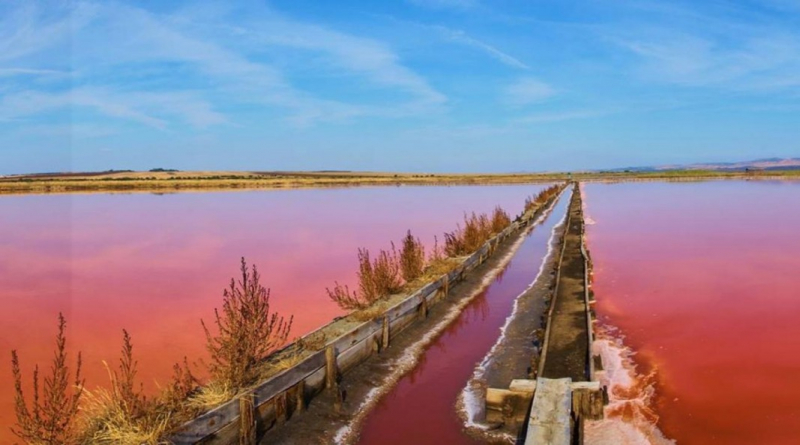
БНР 
Northern Atanasovsko Lake - Wikimapia -
Lake Pomorie is one of Bulgaria's most amazing and beautiful natural attractions. This natural lake is located near Pomorie, a spa town (or rather, the point between Pomorie and Aheloy). Lake Pomorie is classified as a "ultrasaline" lagoon due to its high salinity.
Due to the therapeutic mud that can be extracted from the lake's bottom, Lake Pomorie attracts a lot of tourists. There are clinics that employ this mud, and several people who have experienced mud baths there have claimed that it has amazing health benefits, from skin rejuvenation to the treatment of musculoskeletal issues. They even assert that the mud also works wonders in treating infertility. Several childless couples visit Lake Pomorie and cover themselves in mud in the hopes of achieving their lifelong dream of having children.
Lake Pomorie is regarded as a large outdoor spa where people can receive this ostensibly medical treatment for free. People cover themselves in the black curative mud from head to toe and wait for it to dry. But you should proceed with caution - you can't just jump on it and coat yourself in mud in the hopes of a quick medical miracle and an instant-long life. We strongly advise you to seek the advice of a medical professional before taking a mud bath at Lake Pomorie, if at all possible. Mud baths can also have negative side effects, including dehydration, nausea, and even heat stroke (since the temperature of the mud can reach 100 degrees Fahrenheit). Mud baths also place a significant burden on your cardiovascular system. Mud baths can irritate the skin, especially if you have sensitive skin. Another crucial point to keep in mind is that the mud at the very bottom of the lake, which can be up to 30 meters deep, accumulates very slowly and is widely regarded as the best mud.
Lake Pomorie has a lower water level than the sea. A small dam and a sandy spit separate the lagoon. Despite this, a small canal closer to Aheloy connects the pond to the sea. The isthmus's total width at its widest point is 50 meters. Something should be said about the sandy spit. Despite the fact that it is not far from Pomorie (only 30-40 minutes on foot), the crowds are small. There are wild beaches with crystal-clear seawater and healing black sand. It's also worth noting that there's a nudist beach right next to the city.
Because of the high salinity of Lake Pomorie, salt extraction appears to be unstoppable. The Museum of Salt is located in the town of Pomorie and is the only museum of its kind not only in Bulgaria but also in Eastern Europe. It is literally on the lake's edge. Visitors who are interested will be able to learn about the process of obtaining salt as well as see how it works. Since the beginning, salt has been extracted by evaporating seawater from the surface of a lake due to the sun and wind.
Between Pomorie and Aheloy is where you'll find Lake Pomorie. The journey to Pomorie won't be challenging (though buses do not stop right near the lake). If you live in Pomorie and want to go to the spit, you must find Professor Stoyanov Street in the old part of the city and head in the direction of Sunny Beach.
Lake Pomorie and its surroundings are quite impressive in terms of both size and bird population. Yes, Lake Pomorie is a bird sanctuary as well. The lake and its surroundings have been designated as a protected area since January 2001. Lake Pomorie serves as a vital rest stop for our migratory and wandering feathered friends. The lake is home to 268 different bird species, four of which are considered "critically endangered." In the spring, curious visitors will see happy birds building their nests right there (on a small man-made island). The majority of the birds can be seen here during the summer. It's especially fascinating to see how they teach young people to hunt, fly, and dive. Some of the bird species that inhabit Lake Pomorie are listed in the Bulgarian Red Book. You can engage in safe bird watching at the visitor's reception building and learn more about the lake there. It is situated close to the Salt Museum.
Location: Pomorie Lake, Pomorie, Bulgaria

Bulgaria 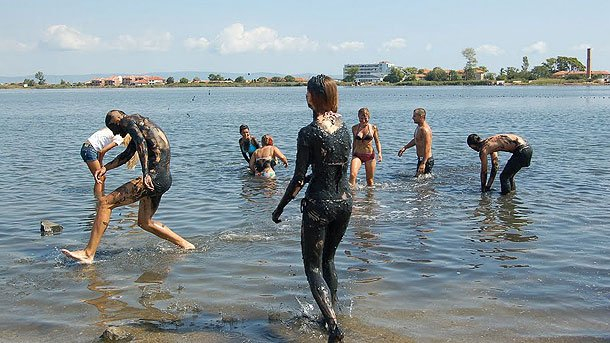
Pomorie mud cure - БНР

























